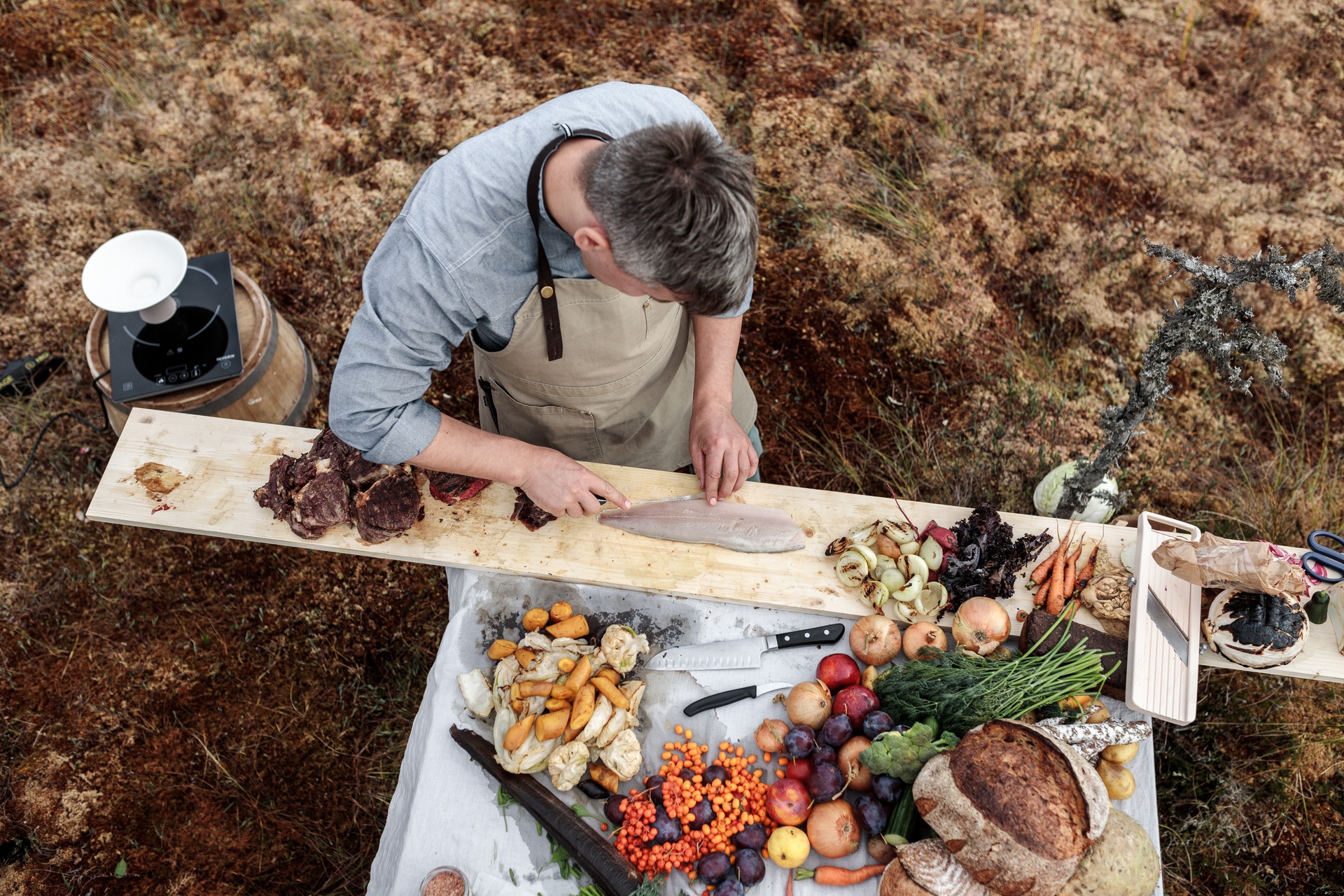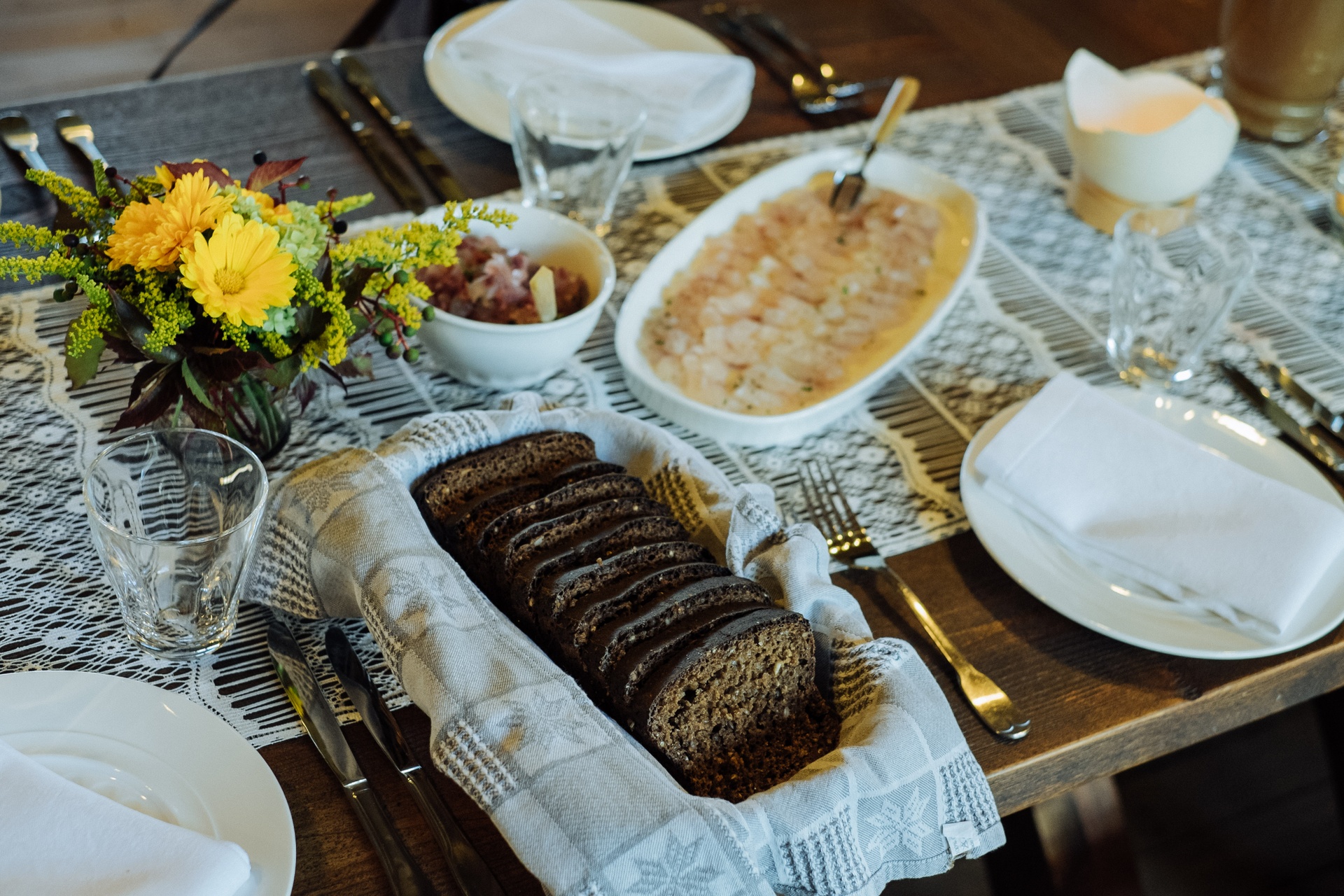
An introduction to Estonian cuisine
The focus on fresh, seasonal ingredients has turned Estonia into a Northern European foodie destination.
In Estonia, the menu changes with the seasons.
Many restaurants and food sellers will change their selections as the temperature shifts. That means the fruits and vegetables change and are preserved throughout the year, while heartier fare and food preserved in the summer and autumn are eaten in the wintertime. Preserved products, such as pickled pumpkin and cranberry jam, add a bright touch to the table during the Christmas season.
Estonians have a specific relationship with food, and part of that is knowing where it comes from. The more local, the better. In fact, many Estonians enjoy harvesting their own food. Some people maintain a small garden for themselves to grow vegetables. Likewise, berry and mushroom picking in Estonia is a national pastime during the late summer and autumn. Other autumnal ingredients include freshly picked apples, root vegetables, and wild game such as elk. The season also means preserving food for winter by pickling, canning, fermenting, and smoking.
Taste Estonia!
The forests, fields and sea have kept Estonians well-fed throughout history. The four distinct seasons provide a variety of seasonal ingredients.
Staples in the Estonian kitchen
Bread has at least three different names in Estonian, which shows just how important it is. "Black bread" is a dark rye bread with a thin crispy crust. It is quite healthy, and you can find a range of options in all shapes and sizes in local markets. Many restaurants also serve freshly baked bread using their own secret recipes. With a spread of Estonia's famous full-fat salty butter, the local bread is sure to tingle your taste buds.
Alongside bread, other Estonian staples include potatoes and pork. You'll also find quite a few dairy products like sour cream, cheese, kefir, milk, and yogurt. Additionally, Estonians eat lots of fish, with herring, pike-perch, or smoked fish being perennial favorites at restaurants serving traditional Estonian food.

A loaf of flavorful black bread is a constant presence on every Estonian dinner table.
Regional traditions and tastes
With such a deep connection to local ingredients, the taste of Estonian cooking can change a lot depending on where you go. With about 3,800 km of coastline, Estonia offers many opportunities for dining next to the sea.
In addition to fish, cuisine in Northern Estonia traditionally combines potatoes, barely, and greenhouse-grown produce. In Southern Estonian, you can eat your way around the shores of Lake Peipsi and tour the Onion Route, where you'll find tasty onion-based dishes. The onion pies are not to be missed!

Source: Hans Markus Antson
Superfoods from the forests and fields
With its international influences, Estonian cuisine retains a signature character thanks to pure, local elements. These "superfoods" are fresh from the forests and fields, bursting with vitamins, and rich in color. For example, blackcurrants are an excellent source of vitamin C. Wild blueberries have a particularly intense, sweet flavor. Savor them harvested during peak season or preserved in traditional jams and juices throughout the rest of the year.
Served simply or dressed up, learn how to prepare original dishes from Estonia's top chefs with these superfoods. Enjoy the full-bodied flavors and health benefits of these foods.
Recipe: Buckwheat porridge with chanterelles
Buckwheat is a wholesome and versatile grain known for its healing properties and used often in folk medicine.
Estonian drink culture
A huge part of Estonian food is the drink culture that goes with it. These days, Estonia has become a hotspot for innovative brewing. As a result, Estonian craft beer can be found almost everywhere in the country, so you're sure to find something that matches your tastes. Alongside beer, you can also try out mõdu, a honey-based drink similar to mead, and kali, a low-alcohol root beer.
Along with the heartier drinks, Estonia has a long winemaking tradition. Unlike conventional wine, Estonian wines are made from berries, with blackcurrants being a common favorite. What's special about Estonian wine is how well it goes with certain desserts.

Source: Alina Birjuk
The sweeter side of Estonian cuisine
Speaking of desserts, Estonia has plenty to offer those with a sweet tooth. Estonian desserts include plenty of cakes, pastries, crumbles, and pies made with berries, jam, and chocolate. Additionally, Estonia has its own practice of making chocolate that goes back to the 18th century, based on marzipan. Since then Estonian chocolate has had its own unique tradition and includes varieties you can't find outside of Estonia, such as sweets made with kama.

Source: Rivo Veber
Affordable gourmet food
Estonia is a top destination for foodies because international and fusion gourmet food can be enjoyed relatively inexpensively. In 2022, Estonia became the first Baltic country to welcome MICHELIN Guide inspectors. A true five-course gourmet feast in Tallinn can cost half the price of a dinner in most European capitals. For those who travel for their taste buds, there's something for everyone. The Estonian restaurant scene has fully embraced fusion cooking, so you can try innovative modern cuisine and new Nordic cooking.
Vegetarians and vegans are also in luck, with many veggie-friendly and veggie-only restaurants that know how to bring out the taste of greens. And for those who want something more medieval, there are quite a few spots where you can try roasted boar or other game meat.

Source: Mariann Liimal
Dig in!
Estonia's food festivals let you sample a variety of local dishes.
Last updated
28.04.2024